Tuscan kale pesto isn’t as well-known as its basil counterpart — but once you make it, it earns a permanent place in your freezer.
Where basil pesto with its intense herb-y flavor demands balance, this version offers flexibility. It’s both robust and refined, sturdy but smooth, flavorful but not overwhelming.

You'll love it with your pasta, demand it on your focaccia, spread it on sandwiches and toast, — and yes, you might find yourself eating it straight from the jar. No judgment. Just good pesto.
Table Of Contents
Ingredients & Notes

Substitutes & Add-Ons
- Nuts - While pine nuts are traditional, walnuts pair beautifully with kale's earthy flavor and add omega-3 fatty acids. Almonds provide a more neutral base and extra crunch, while a mixed blend of nuts creates complex flavor layers. You can even toast your nuts lightly before blending for enhanced flavor.
- Parmesan Cheese - authentic Parmigiano Reggiano is essential savory depth and umami flavor but it can be substituted with Grana Padano, and, if you like strong flavors, even Pecorino or a mix of both.
- Garlic - use in moderation, even if that means using a quarter of a clove. In this pesto, garlic should support the flavor — not dominate it. Think background note, not headline.
- Basil - add a few fresh basil leaves for another layer of flavor.
- Lemon - add a squeeze of lemon juice or lemon zest for a twist.
How To Make - Step By Step
See the recipe card for full information on ingredients and quantities.
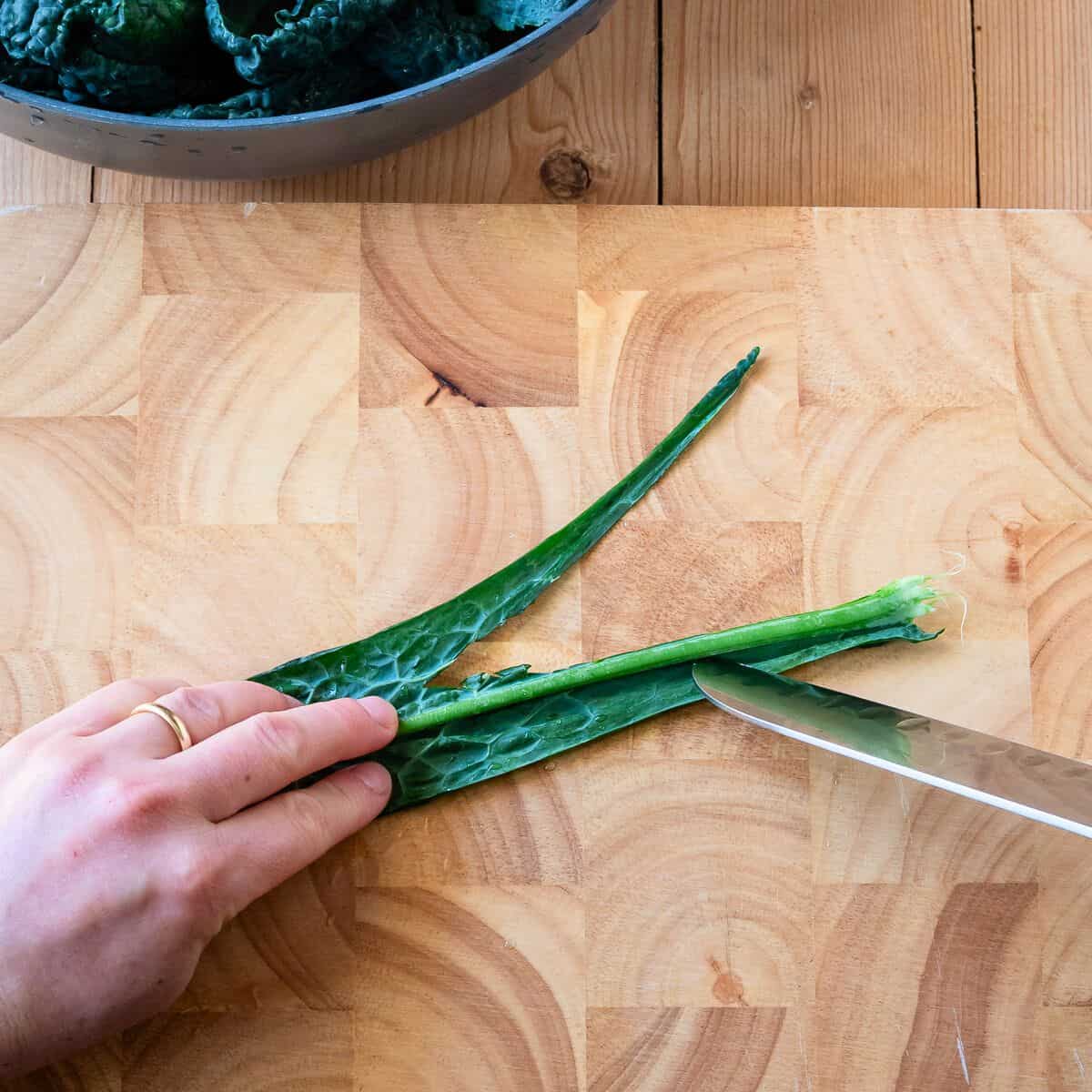
- Rinse the kale thoroughly. Remove the tough central stems. The easiest way to do this is to perform cuts along the stem from the middle all the way to the base of the leaf.
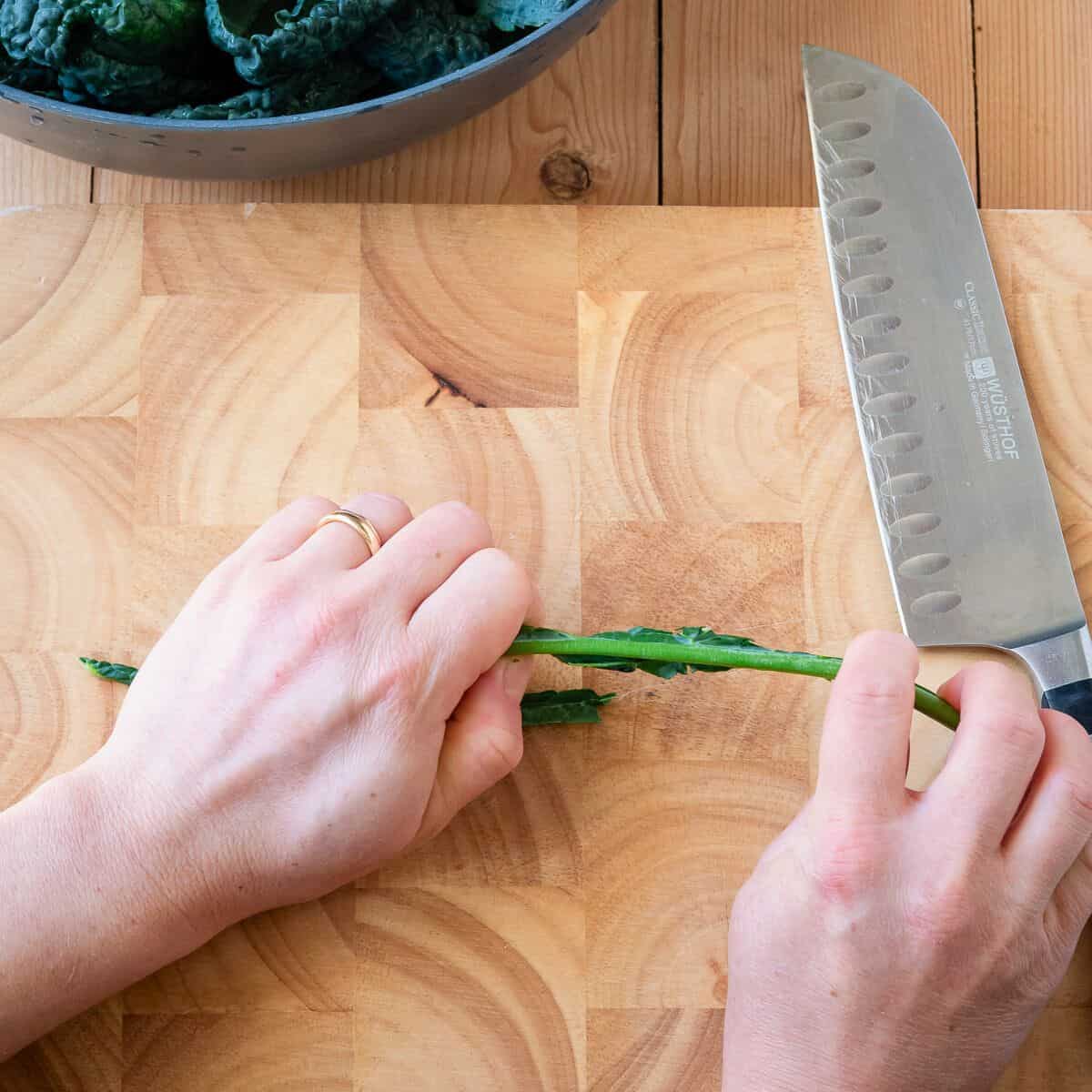
- Then hold the base of the stem with one hand and strip the leaves away with the other hand.
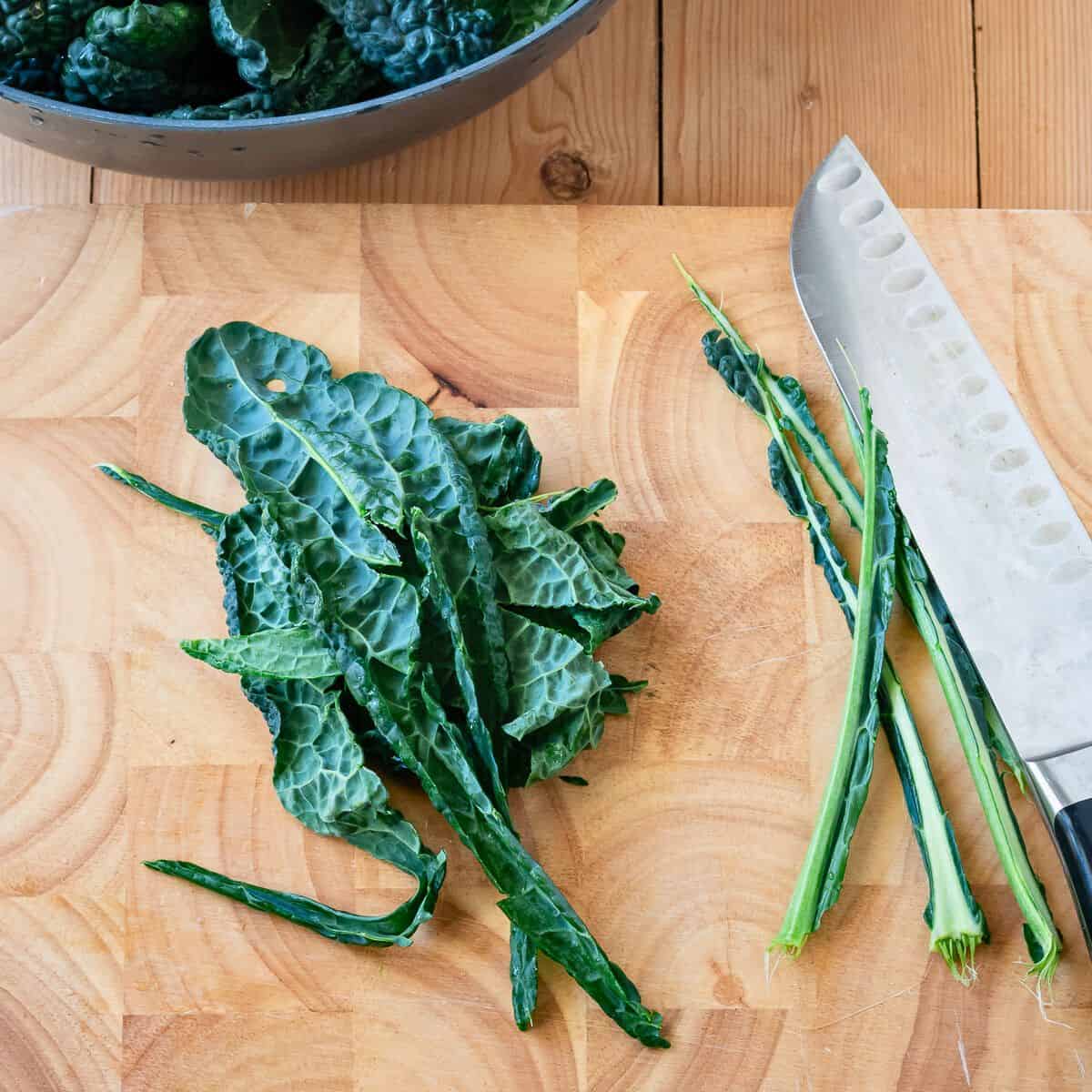
- You can also tear the leaves away without the cuts, but this will work only with small and or fresh and crisp leaves.
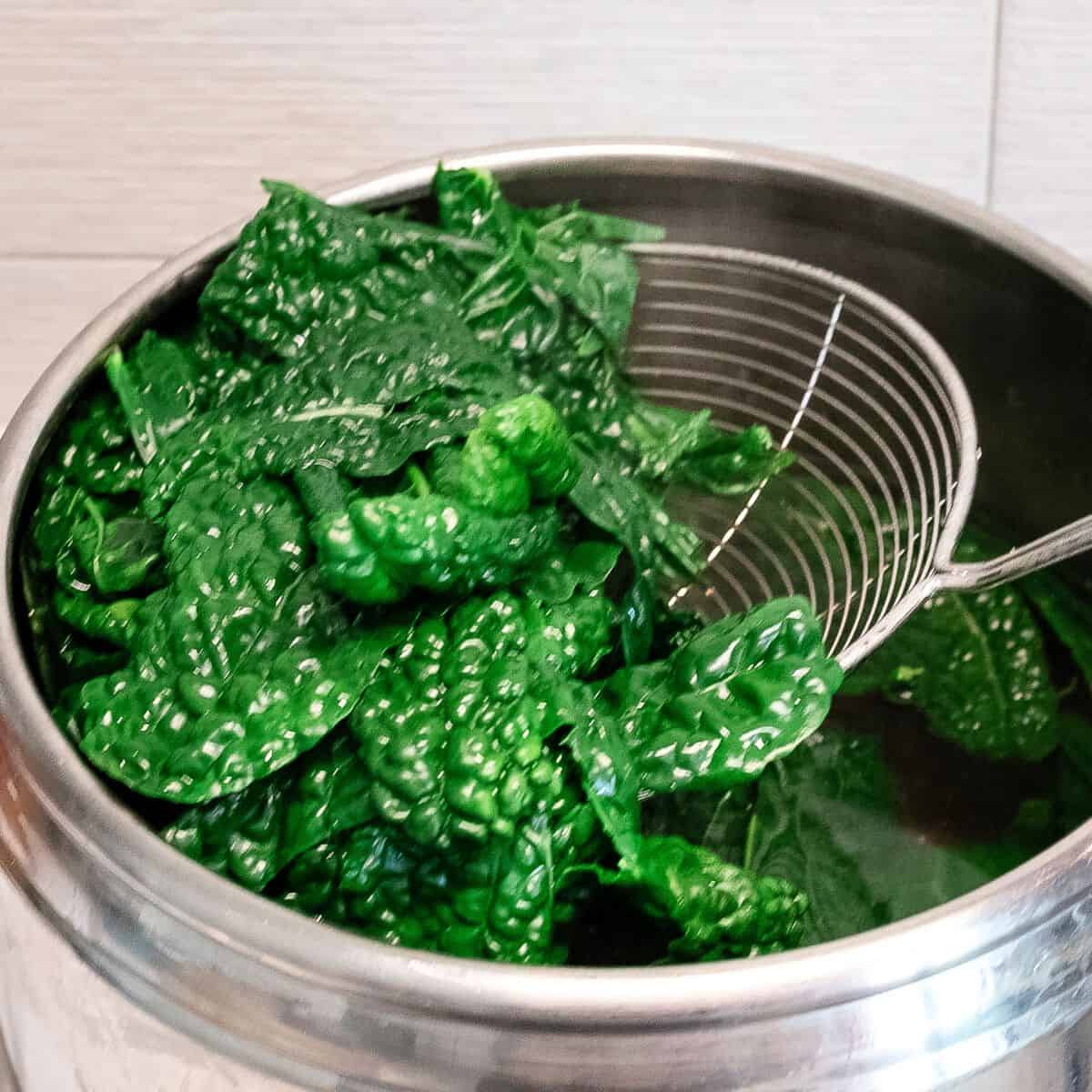
- Drop kale leaves in boiling water and cook for about 3 minutes. This is called blanching.
Why blanching is important?
The blanching step is crucial for kale pesto success. This process not only softens the tough fibers of kale but also neutralizes some of its natural bitterness. The ice bath immediately after blanching is equally important—it preserves the vibrant green color and stops the cooking process to maintain nutritional value. Don't skip this step!
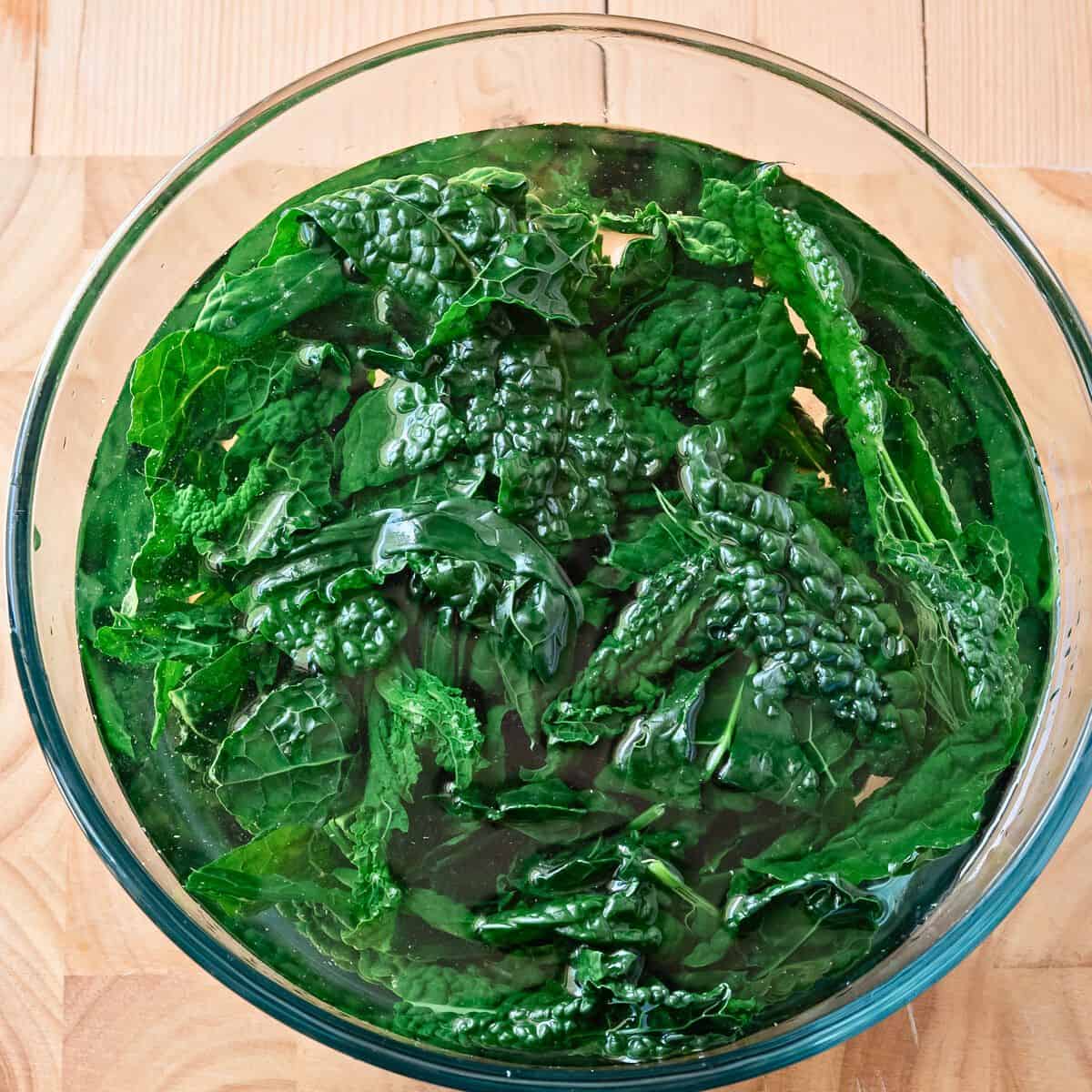
- Drain (reserve some cooking liquid) and immediately place in a bowl with ice water to preserve kale's bright green color and stop the cooking process.
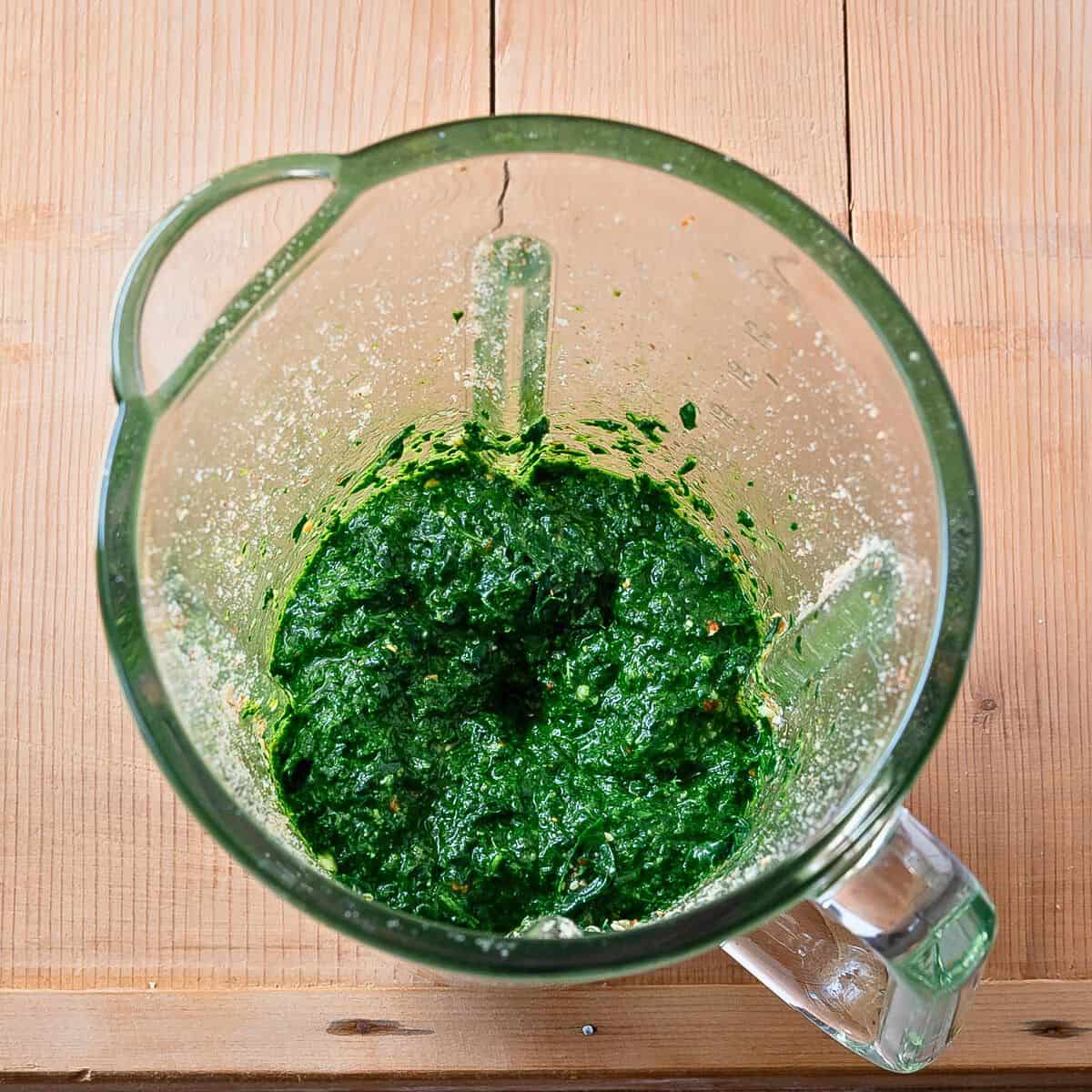
- In a food processor, quickly blitz nuts, Parmesan cheese, and a garlic clove.
Squeeze kale to remove excess water and add it to the food processor bowl.
Add extra virgin olive oil and blend until smooth. Add a little more oil or cooking liquid from the kale if needed to get a perfectly creamy consistency.
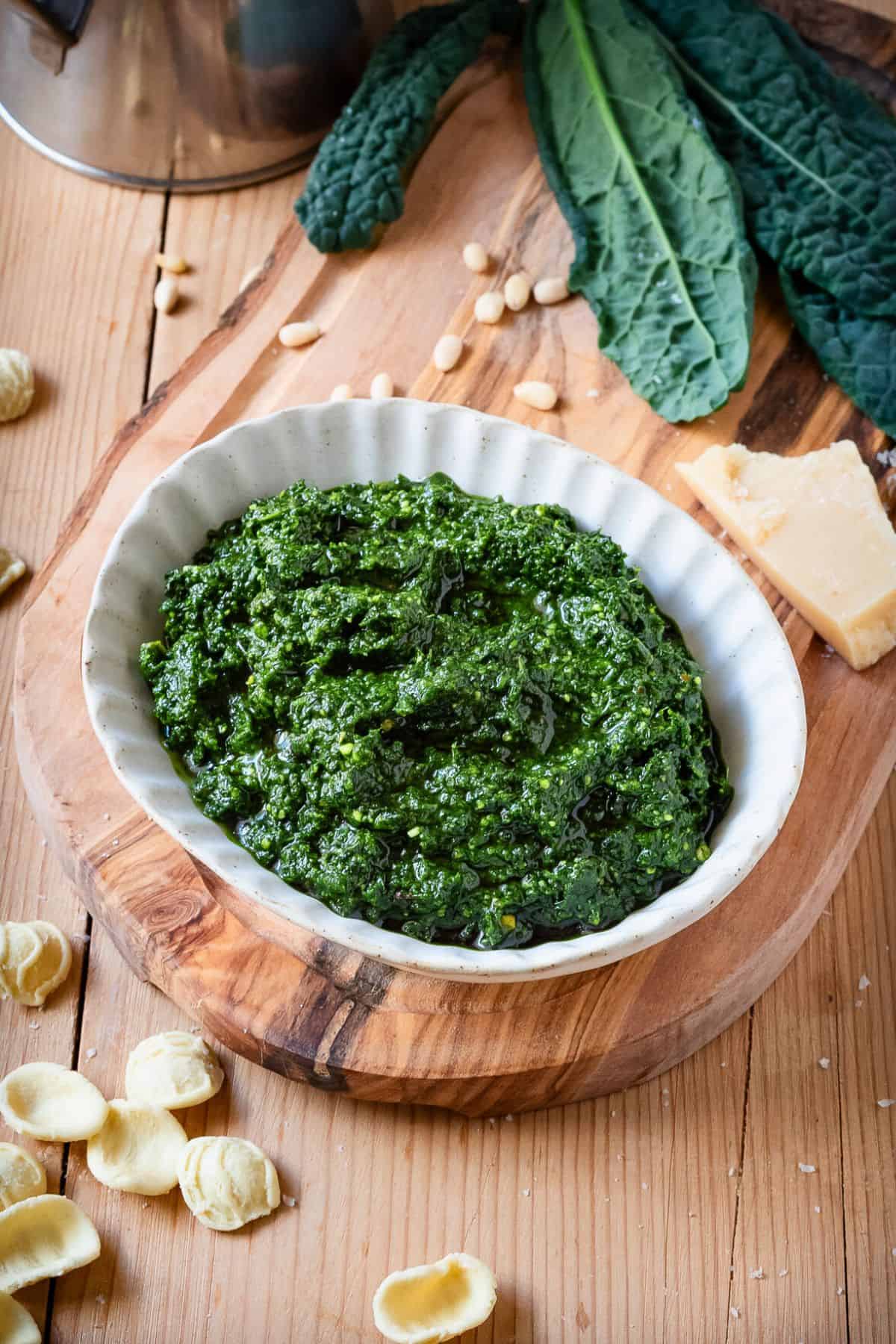
Top Tips - Don't Miss!
- Don't skip blanching. Blanching kale before blending isn’t just a chef’s trick — it’s a foundational technique. A quick dip in boiling water softens tough fibers and reduces bitterness, making the final pesto smoother and more balanced. The immediate ice bath stops the cooking process, locks in nutrients, and preserves the bright green color. Skip this, and you compromise both flavor and texture.
- Balance and adjust flavor. Kale stands up well to bold additions — but garlic is optional, not essential. For added brightness, a small amount of lemon juice can help. To deepen the savory profile, increase Parmesan slightly or substitute with nutritional yeast for a dairy-free version.
- Choosing and using nuts. Pine nuts are traditional, but not required. Walnuts add richness and complement kale’s earthy notes. Almonds offer a more neutral flavor. A mix can add nuance. Toasting the nuts briefly before blending brings out their aroma and depth.
- The right consistency. Great pesto isn’t thick paste or thin sauce — it’s somewhere in between. If yours feels dense or heavy, slowly add olive oil or a small amount of the blanching water or oil. Adjust gradually and to taste.
- Smart storage for long-term use. To refrigerate, smooth the surface and top with a thin layer of olive oil. This slows oxidation and extends freshness. For freezing, portion the pesto into ice cube trays. Once solid, transfer to a sealed bag with minimal air. This preserves flavor and allows for easy, single-use servings.
7 Ways To Use Kale Pesto
- Stirred into pasta – the best pairing I've ever had was with orecchiette. troffie o cavatelli are also good choices but if spaghetti is all you have - go with it! Add a splash of pasta cooking water to the pesto and toss everything in a bowl to coat evenly.
- Spread on crostini – a simple antipasto with toasted bread and a drizzle of good olive oil. Top it with canellini beans as a nod to Tuscan ribollita.
- As a condiment for grilled meats – a spoonful on grilled chicken, turkey or steak feels like a mix between a sauce and a side dish. Super creamy and satisfying.
- Folded into soups – any small leftovers can be frozen in an ice-cube tray and added to soups (especially bean-based) for extra creaminess and nutrients.
- Spread on sandwiches – to add moisture and incredible flavor without mayo.
- Pizza or focaccia topping - add mozzarella cheese on the base, cook until melted and top with kale pesto before serving.
- Tossed with roasted vegetables
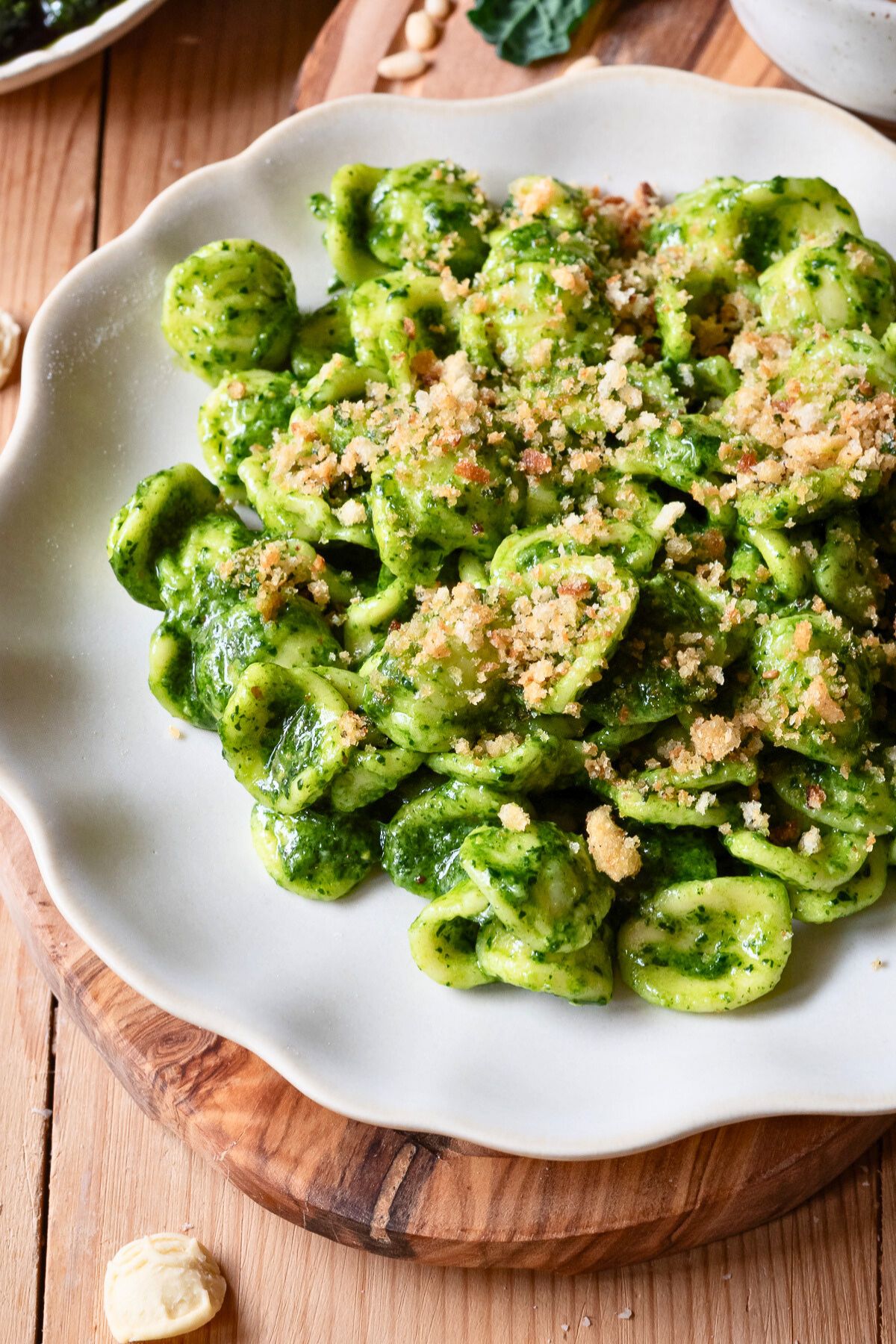
More Tuscan Recipes To Try

Love Italian Food?
Sign up for our weekly newsletter to receive tips, tricks and new recipes delivered straight to your inbox!
Full Recipe

Tuscan Kale Pesto
Ingredients
- 1 bunch Tuscan Kale (Lacinato Kale) (300 grams) or 200 grams clean and trimmed
- ½ cup Parmesan cheese , 50 grams
- ¼ garlic clove
- 120-150 grams oil
- 30 grams nuts (pine nuts, almonds, walnuts or a mix of all)
- ½ teaspoon Salt
Instructions
- Trim and cook kale in boiling water for 3 minutes.
- Drain and immediately place in a bowl with cold water and ice preserve its bright green color and stop the cooking process.
- In a food processor, quickly blitz nuts, Parmesan cheese, and a garlic clove.
- Squeeze kale to remove excess water and add it to the food processor bowl. Add extra virgin olive oil and blend until smooth. Add a little more oil or cooking liquid from the kale if needed to get a perfectly creamy consistency.
Notes
Nutrition
Nutrition information is automatically calculated, so should only be used as an approximation.






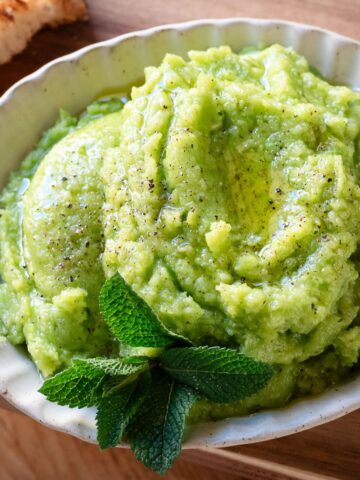
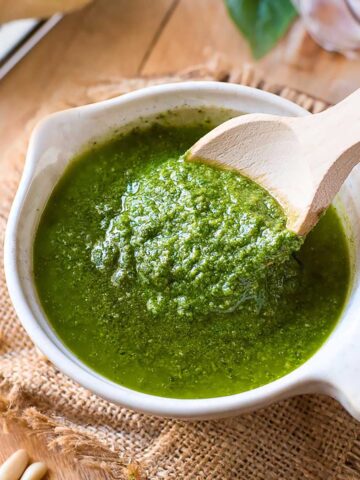


Leave a Reply